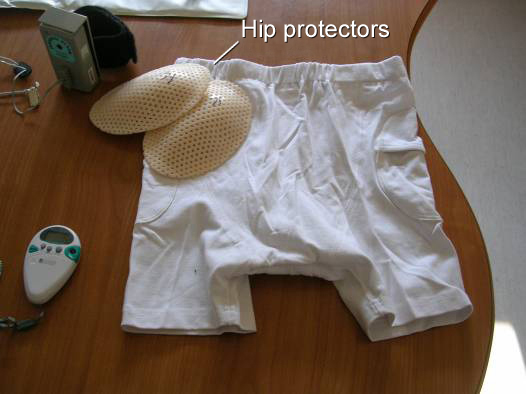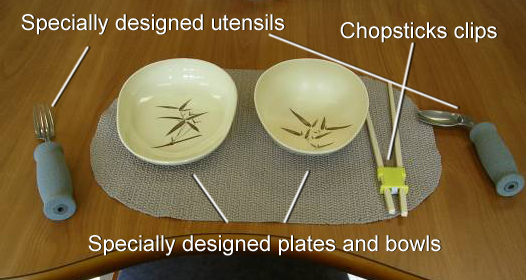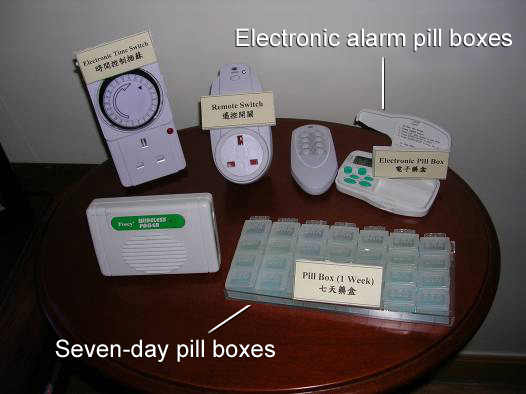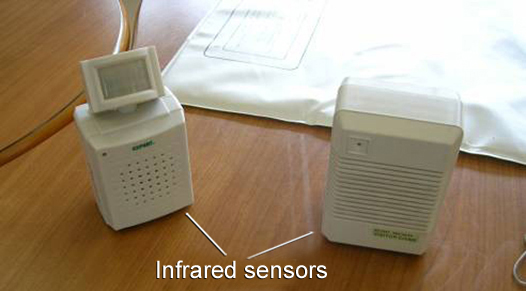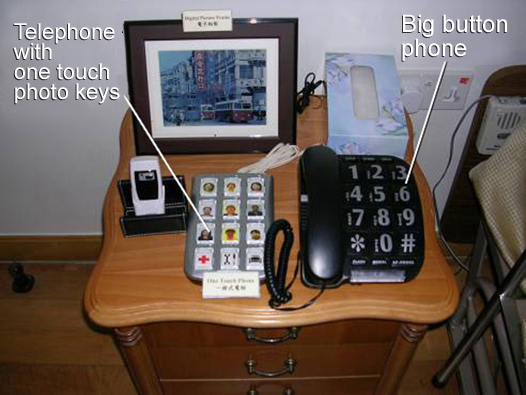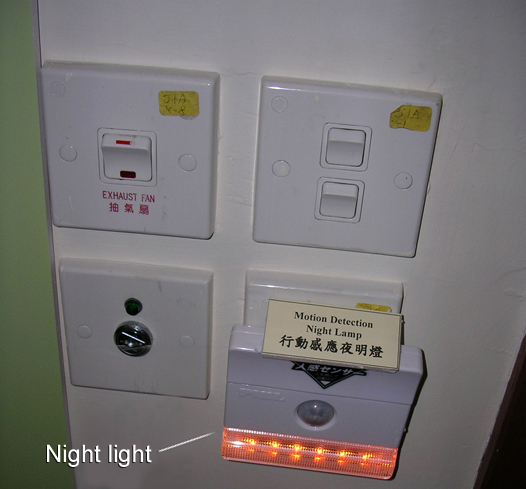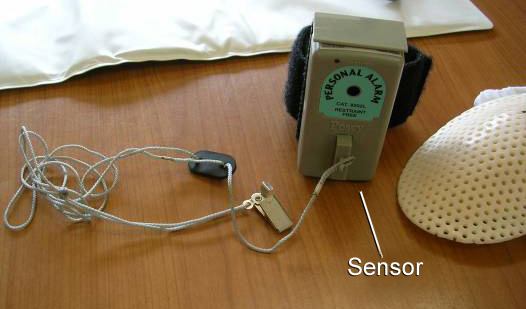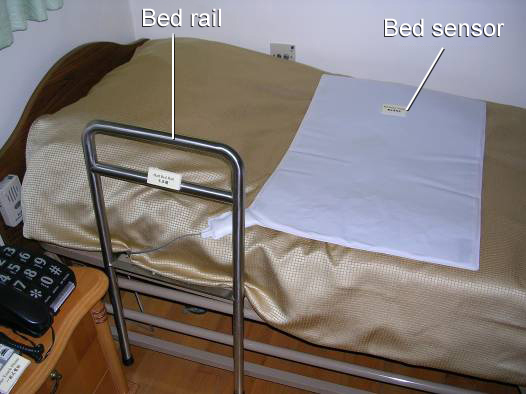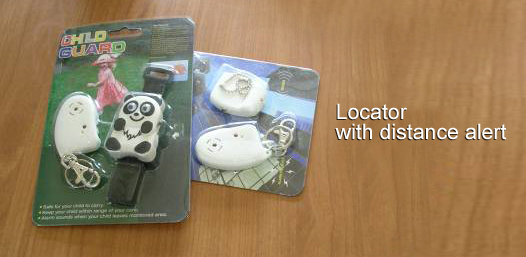DressingExpand
- Hook-and-loop fasteners: Help the person to take off and put on clothes.
- Elastic waistbands: Help the person to take off and put on pants.
- Button hooks: Help the person to button up.
- Dressing stick: Help the person to put on clothes.
- Sock aids: Help the person to wear socks.
- Zipper puller: Help the person to pull zippers.
- Hip protectors: Can decrease the risk of hip fracture during falls.
DiningExpand
- Inner-lip plate: Prevent food from spilling when the person scoops from the plate.
- Non-slip matting: Prevent utensils from slipping.
- Specially designed plates, and bowls: Objects such as plates and bowls with suction bases, scooper plates, and scooper bowls can assist the person to eat.
- Specially designed utensils: Aids such as spoon and fork holders, bendable utensils, and utensil straps can assist the person by helping with grip.
- Chopsticks clips: Assist the person to use chopsticks.
- Seven-day pill boxes: Prevent the person from overdosing.
- Electronic alarm pill boxes: Remind the person to take medications.
LivingExpand
- Anti-slip treatment products: Products such as non-skid wax and anti-slip liquid reduce the risk of slipping.
- Infrared sensors and bed sensors (CareWatch system): Inform caregivers where the person goes.
- Entry contact alarms: Inform caregivers when the person is leaving the house.
- Night lights: Help the person to walk at night.
- Switches with light indicators: Help the person to find switches at night and recognise whether the power is on or not.
- Bed rails: Assist the person to get off the bed and prevent the person from falling off the bed.
- Amplified telephones with one touch photo keys and big button phones: Helps the person to make calls.
- Visual communication: Such as videophone.
Going outExpand
- Non-slip shoes: Reduce fall risk
- Suitable shoes: The forefoot of elderly people will become wider while the hindfoot will become narrower, so new shoes may have to be bought from time to time.
- ID bracelets and tags: Help others to contact caregivers when the person is lost; available at accessory stores that provide laser engraving services.
- Name tags with photos and personal information: Help others to contact caregivers when the person is lost; can be custom made in gift shops.
- Locator with distance alert: Helps caregivers to locate the person and inform caregivers when the person is too far away.
- Communication devices: Such as a mobile phone, Mobile Link (Senior Citizen Home Safety Association), OK Link (Baptist Oi Kwan Social Service), Family FINDER (DigiMobi Technology Limited), or PortaLink (Chubb Hong Kong).
